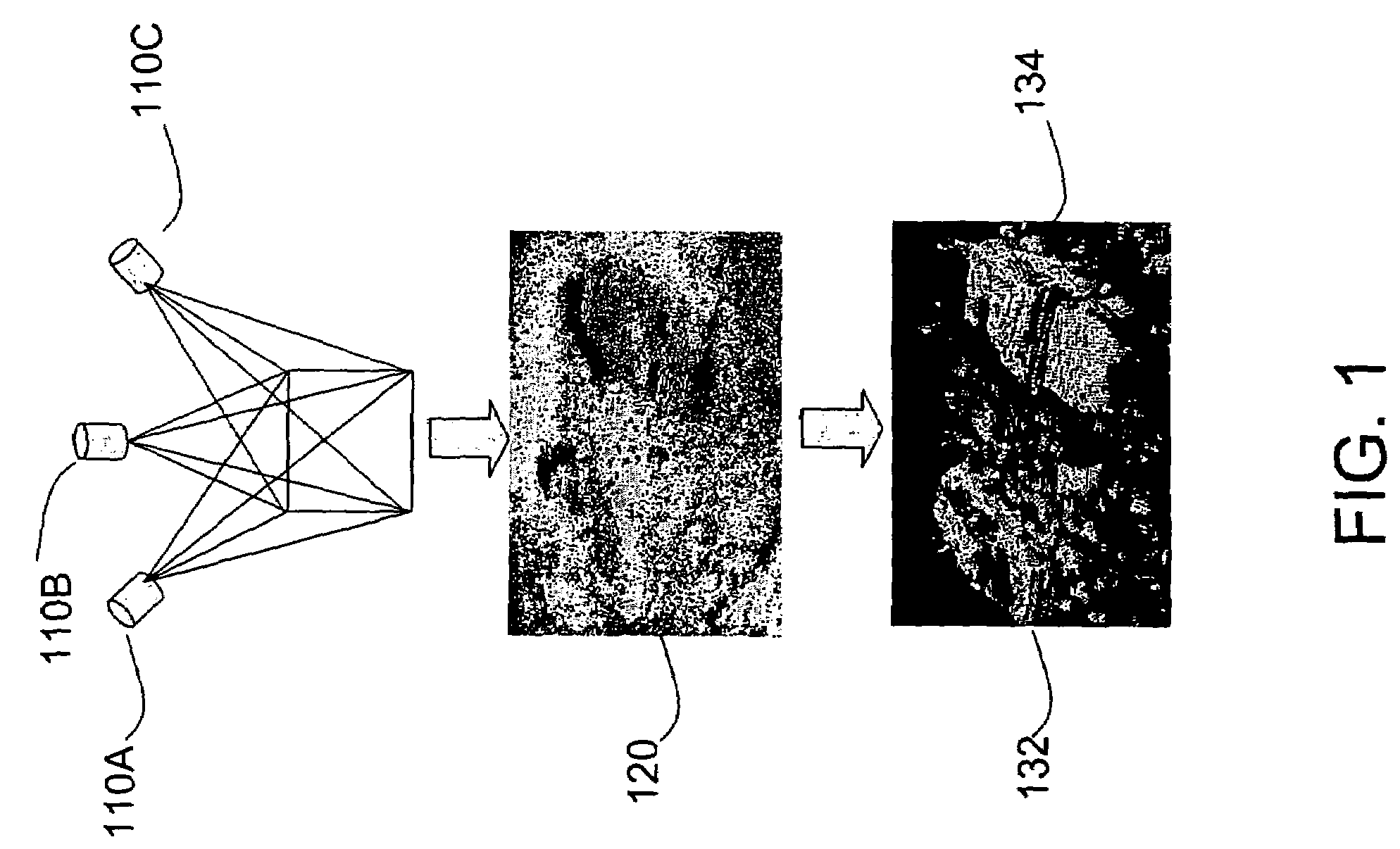Method and apparatus for automatic registration and visualization of occluded targets using ladar data
a technology applied in the field of automatic registration and visualization of occluded targets using ladar data, can solve the problems of difficult segmentation of 2d image into object and occluder pixels, insufficient light from the object, and impracticality of achieving this goal with a 2d sensor, so as to enhance the visual exploitation of aligned and aggregated ladar frames
- Summary
- Abstract
- Description
- Claims
- Application Information
AI Technical Summary
Benefits of technology
Problems solved by technology
Method used
Image
Examples
Embodiment Construction
[0023]Embodiments of the present invention show some characteristics of ladar frames collected by sensors in an operational scenario. FIG. 1 illustrates a set of sensors 110A-C adapted to collect data from a scene. Although there are only three sensors shown in FIG. 1, more could be utilized to implement the present invention. Alternatively, 110A-C in fact may illustrate only a single ladar sensor that is moved to three different locations. Sensors 110A-C may be ladar sensors or some other visual data collection device. Sensors 110A-C may be carried by a person or deployed on any land, airborne, or amphibious vehicle, e.g., a motor vehicle, airplane, helicopter, boat, or a remotely controlled vehicle. Targets of interest 132, 134 are viewed through a dense scattering medium, e.g. a mass of foliage 120. Since the foliage 120 blocks almost all the rays to the targets 132, 134, the 3D points on the target surface may be sparse and irregular—too few for data-driven registration. Therefo...
PUM
 Login to View More
Login to View More Abstract
Description
Claims
Application Information
 Login to View More
Login to View More - R&D
- Intellectual Property
- Life Sciences
- Materials
- Tech Scout
- Unparalleled Data Quality
- Higher Quality Content
- 60% Fewer Hallucinations
Browse by: Latest US Patents, China's latest patents, Technical Efficacy Thesaurus, Application Domain, Technology Topic, Popular Technical Reports.
© 2025 PatSnap. All rights reserved.Legal|Privacy policy|Modern Slavery Act Transparency Statement|Sitemap|About US| Contact US: help@patsnap.com



